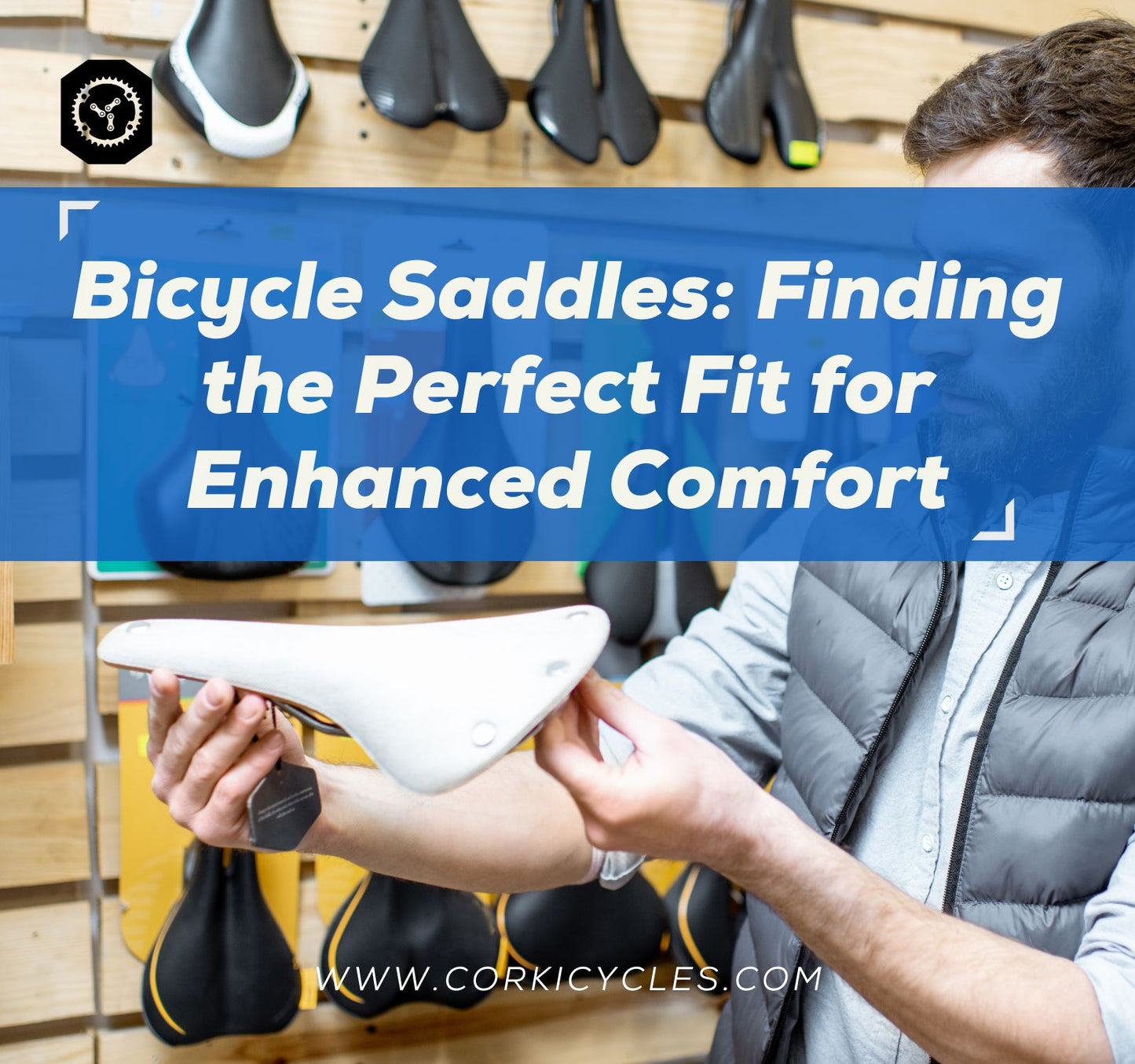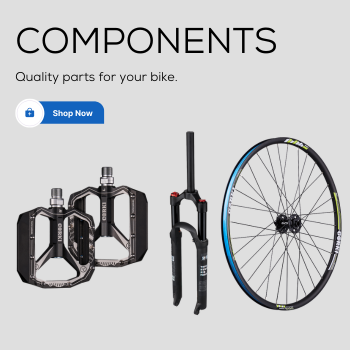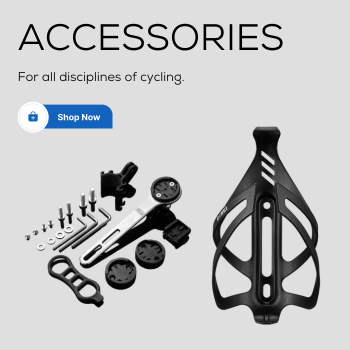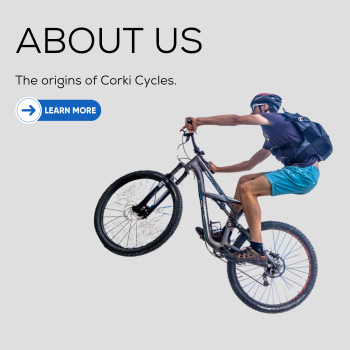
Uncomfortable bike rides can be a terrible experience. One of the main reasons for this discomfort could be an ill-fitting bike saddle.
Whether you're a road cyclist, mountain biker, or casual commuter, choosing a good bike saddle is essential to enhance your comfort and enjoyment during a ride. Finding the right bike saddle can be a time-consuming process. However, your cycling experience will improve significantly once you find the perfect fit.
This blog post will take you through the fundamental steps of choosing the best bike saddle.
Importance of a Perfect Saddle
Do you ever feel like you're cycling uphill on a flat road? It could be due to an ill-fitting saddle. It not only causes discomfort but also affects your cycling performance. A well-fitted saddle is essential for a comfortable and efficient ride, and it helps improve posture and overall performance.
Most riders understand the importance of saddle fit. It can prevent painful chafing, recurring saddle sores, and sore muscles. A well-fitted saddle can also improve your performance. A proper fit can help you maintain the correct riding position, allowing for optimal power transfer from your legs to the pedals. It can also prevent lower back pain by supporting your pelvis and distributing weight evenly across your sit bones, thus preventing nerve compression.
Different Types of Bike Saddles
The saddle aisle can be overwhelming for the uninitiated, with various shapes, sizes, and materials vying for attention. To simplify your quest, let's begin by introducing some common types of bike saddles:

Road Bike Saddles: Streamlined for Speed
Road bike saddles are engineered for efficiency and speed. They aim to minimize weight and wind resistance with a sleek, narrow design, providing the aerodynamics needed for swift rides on smooth surfaces. These saddles often feature minimal padding to reduce bulk and allow for an aggressive, forward-leaning riding position.
Mountain Bike Saddles: Durability and Control
In contrast to their road counterparts, mountain bike saddles prioritize durability and control. These saddles are designed for off-road terrains and feature a wider profile for enhanced stability. They also come with extra padding to absorb shocks from rough trails. The focus is on comfort during longer, challenging rides through varying landscapes.
Touring Saddles: Long-Distance Comfort
Touring saddles are the endurance athletes of the biking world. These saddles are specifically designed for long-distance rides, prioritizing comfort and support over aggressive designs. They often feature ample padding, a wider shape to accommodate different riding positions, and durability to withstand the rigors of extended journeys.
Commuter Saddles: Versatile and Practical
Commuter saddles strike a balance between comfort and practicality. These saddles are well-suited for urban commuting with a design that accommodates various riding positions. They may incorporate features like waterproof materials, reflective elements, and a moderate level of padding to ensure a comfortable and efficient ride in diverse conditions.
Choosing the right saddle for you
Different types of cycling require different riding positions and styles. For example, a road cyclist and a mountain biker sit differently on their saddles. Because of this, bike saddles are designed differently for touring, racing, and mountain biking to account for these differences.
Trying various bike saddle models is the best way to find the right one. Even slight differences between one saddle and another can make a significant difference in comfort. Therefore, it's important to try out a range of shapes and sizes.
Fortunately, most saddle brands offer demo models that you can try out at most local bike shops free of charge. Additionally, you can ask a friend to try their saddle.
If you're unsure where to start when buying a saddle, measuring the width of your sit bones/pelvis can help you find a good starting point.
Here's how you can measure your sit bones:
- Get a large piece of tin foil or thin corrugated cardboard.
- Sit on a carpeted step and place the foil or cardboard underneath your buttocks.
- Lift up your feet as if you were pedaling a bike.
- Stand up and measure the distance between the two deepest depressions.
- Add 2cm to your sit bone/pelvis width to determine your saddle size. For example, if your sit bone width is 13cm, you'll need to look for a saddle with a width of 15cm.
- Once you know your sit bone width (remember to add 2cm) and the saddle shape you're looking for, you can start shopping around. Most bike saddles list their width in the product description.

Adjusting Saddle Height and Angle
When adjusting your saddle, it's crucial to find the correct position for it. A bad saddle angle can cause discomfort while riding. Adjusting the saddle height and angle accurately ensures your comfort and improves your riding efficiency and biomechanics.
Begin by setting the saddle height correctly. If you feel like your legs are overworked during a ride, it may be due to incorrect saddle height. To check your saddle height, sit on the saddle with one heel on the pedal. Your leg should be fully extended at the bottom of the pedal stroke.
Next, adjust the saddle angle for comfort. Start with a flat or slightly nose-down position. Avoid tilting the saddle too far down, as it can pressure your hands and wrists.
Lastly, adjust the saddle's fore/aft position. It refers to the saddle's position along the rails from front to back. When your pedal is at 3 o'clock, a plumb line dropped from the bony point just below your kneecap should intersect the pedal axle.
Remember, your saddle angle is crucial to your comfort and efficiency while riding. Adjusting it correctly is vital to your biking biomechanics. Take the time to find that sweet spot where comfort and efficiency intersect. Also on rides carry a multi-tool with you so that you can easily adjust if the current angle or height isn’t working for you.
Conclusion
To eradicate chafing, saddle sores, or other discomfort on your bike you should spend ample time researching and trying out different saddles. It's important to keep in mind that there is no single "perfect" comfortable saddle that works for everyone. The best thing to do is narrow down the saddle you need based on your riding style, body type, and discomfort issues, and then try out a few saddles to find the one that fits you best.
Check out our article on building your dream bike to add to the perfect new saddle.
Happy cycling!




